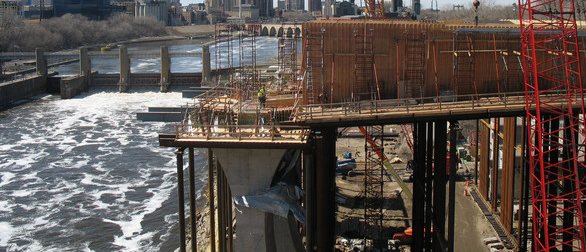Category
- Concrete Waterproofing
Concrete is used in a wide variety of different structures and environments throughout the world. But one of the environment’s toughest forces on concrete is marine environments. Despite that, concrete has been used successfully as the main construction material for seawalls, breakwaters, bulkheads, and jetties, just to name a few.
However, concrete infrastructure in marine environments can face reduced life spans due to rapid deterioration if the risks aren’t considered during the design process. The exposure to extreme environmental conditions allows water and waterborne chlorides to penetrate the concrete. Water being able to penetrate the concrete leaves the reinforcing steel at risk to corrosion and expansive cracking, which leaves the entire structure at risk to premature deterioration.

Ultimately, water permeability of concrete structures will determine the rate of at which a structure will deteriorate. Therefore, in order to ensure a concrete structure is durable in marine environments, proper concrete waterproofing is vital.
In June, Kryton provided a technical article for Construction Canada that delves deep into building durable structures in marine environments. Click here to read that entire article.



